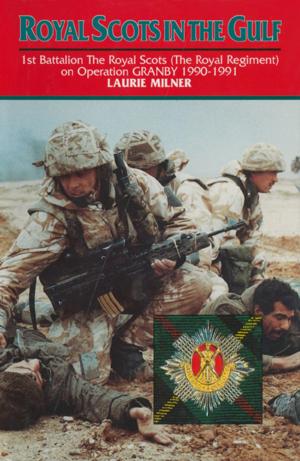Naval Firepower
Battleship Guns and Gunnery in the Dreadnought Era
Nonfiction, History, Military, Naval| Author: | Norman Friedman | ISBN: | 9781844681761 |
| Publisher: | Pen and Sword | Publication: | August 20, 2013 |
| Imprint: | Seaforth Publishing | Language: | English |
| Author: | Norman Friedman |
| ISBN: | 9781844681761 |
| Publisher: | Pen and Sword |
| Publication: | August 20, 2013 |
| Imprint: | Seaforth Publishing |
| Language: | English |
For more than half a century the big gun was the arbiter of naval power, but it was useless if it could not hit the target fast and hard enough to prevent the enemy doing the same. Because the naval gun platform was itself in motion, finding a 'firing solution' was a significant problem made all the more difficult when gun sizes increased and fighting ranges lengthened and seemingly minor issues like wind velocity had to be factored in. To speed up the process and eliminate human error, navies sought a reliable mechanical calculation.
This heavily illustrated book outlines for the first time in layman's terms the complex subject of fire-control, as it dominated battleship and cruiser design from before World War I to the end of the dreadnought era. Covering the directors, range-finders, and electro-mechanical computers invented to solve the problems, America's leading naval analyst explains not only how the technology shaped (and was shaped by) the tactics involved, but analyses their effectiveness in battle. His examination of the controversy surrounding Jutland and the relative merits of competing fire-control systems draws conclusions that will surprise many readers.
He also reassesses many other major gun actions, such as the battles between the Royal Navy and the Bismarck and the US Navy actions in the Solomons and at Surigao Strait. All major navies are covered, and the story concludes at the end of World War II with the impact of radar.
This is a book that everyone with a more than passing interest in twentieth-century warships will want to read, and nobody professionally involved with naval history can afford to miss.
For more than half a century the big gun was the arbiter of naval power, but it was useless if it could not hit the target fast and hard enough to prevent the enemy doing the same. Because the naval gun platform was itself in motion, finding a 'firing solution' was a significant problem made all the more difficult when gun sizes increased and fighting ranges lengthened and seemingly minor issues like wind velocity had to be factored in. To speed up the process and eliminate human error, navies sought a reliable mechanical calculation.
This heavily illustrated book outlines for the first time in layman's terms the complex subject of fire-control, as it dominated battleship and cruiser design from before World War I to the end of the dreadnought era. Covering the directors, range-finders, and electro-mechanical computers invented to solve the problems, America's leading naval analyst explains not only how the technology shaped (and was shaped by) the tactics involved, but analyses their effectiveness in battle. His examination of the controversy surrounding Jutland and the relative merits of competing fire-control systems draws conclusions that will surprise many readers.
He also reassesses many other major gun actions, such as the battles between the Royal Navy and the Bismarck and the US Navy actions in the Solomons and at Surigao Strait. All major navies are covered, and the story concludes at the end of World War II with the impact of radar.
This is a book that everyone with a more than passing interest in twentieth-century warships will want to read, and nobody professionally involved with naval history can afford to miss.















